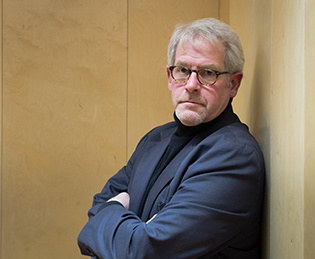Tim Tate is an author, investigative journalist and filmmaker who worker with the late Ray Wyre – a pioneer in treatment of child sex offenders. Here, Tim describes how Ray’s work challenged the lack of rehabilitation options for paedophiles and asks if the current system is doing enough to protect children from abuse…
For someone whose work would become so influential, Ray Wyre’s introduction to sex offenders was surprisingly accidental.
In 1981, three years after joining the Probation Service, he was transferred to Albany, the high security facility on the Isle of Wight: here, by chance, he was assigned to the E Wing, which then housed 36 sex offenders in segregation from the rest of the prison’s population.
He was surprised to discover that no work was being done with these men, each of whom refused to believe that the sexual offences for which they had been convicted were wrong. As he put it: “Somehow the prison and the Home Office seemed to think that simply imprisoning these men was enough – that, on their own, their sentences would cure the problem.”
In the absence of any official interest, Ray set up his own programmes, working intensively with the offenders to challenge their distorted thinking and thereby make them less likely to re-offend, post-release. Within two years he was running seven groups a week and the number of offenders in them had doubled. He also benefited from a secondment to American law enforcement – then, as now, considerably in advance of Britain in the effort to understand and control paedophilic behaviour.
But other prison officers resented his work and in 1987 he resigned from the Probation Service, taking out bank loans to fund intensive intervention sessions with sex offenders living in the community. This proved so successful that within a year he established Britain’s full-time residential clinic for sex offenders in Birmingham.
Gracewell was a unique and pioneering facility. Ray’s work had, by then, received national recognition and the clinic received a steady stream of offenders sent by courts, prisons or social services departments. Here they were treated – most for the first time in a life-long career of offending – in intensive individually-tailored one-to-one as well as group sessions. 
Ray argued not only that treating these men was the best hope society has for protecting children, but that Gracewell had an outstanding success rate in changing the beliefs and behaviour of ‘career’ paedophiles. Empirically, there is no statistic evidence to confirm this: to the best of my knowledge, no formal assessment of the recidivism rate among the clinic’s alumni was ever undertaken. Less scientifically, however, I frequently saw, first-hand, individual sex offenders reach the point at which they grasped – for the first time – the terrible impact of their crimes. On each occasion it was an astonishing moment; a man who, until then, had minimised or made excuses for his offences suddenly saw them for what they were. This psychological breakthrough was accompanied – every time – by a noticeable physical change.
By 1991 the government, under constant pressure from Ray and his colleagues, belatedly realised the need to replicate Gracewell’s programs inside prisons. Using Ray’s models, it set up the first pilot schemes for treating sex offenders during their sentences.
When I was asked to update The Murder of Childhood, the book Ray and I published in 1995 about his ground breaking work and one of his most harrowing cases – the serial paedophile murderer Robert Black – I wanted to discover how sex offender treatment programs had developed in the intervening years. Gracewell had been forced, by a remarkably ill-informed local campaign, to close its doors and in 2002 the sole government-funded residential clinic for paedophile offenders, Wolvercote, met the same fate. Ray himself died in 2008, and his campaigning voice was largely lost; but the prison programs were – or should have been – one of his most enduring legacies.
At first glance the picture appeared to have improved since 1995: around half of all prisons in England and Wales now offer treatment programmes for sex offenders (SOTPs), and the custodial sentence threshold for entering one has reduced from the initial four years to one. Sadly, that is where the good news ends.
The programs are voluntary and only a fraction of those convicted ever join them: according to the Ministry of Justice between 2000 and 2012 (the latest figures available) just 2,562 men started SOTP treatment (it does not record the number who dropped out). Compared with the number of sex offenders in prison – 13,324 in 2017 alone – the take-up rate is worryingly low.
Worse, despite the fact that men (and indeed women) who commit sexual offences against children have fundamentally different motivations and distorted thinking processes than those who target adults, all of the prison-based SOTPs are generic; not one is specific to child sexual abuse.
This may explain the emerging evidence that they have been failing in their primary goal of reducing the risk of re-offending. Studies carried out by the Ministry of Justice in 2017 showed that compared to offenders who had not taken part in SOTPs, those who did were found to be more likely to commit at least one new offence after their release. Unsurprisingly, the Government was forced abruptly to replace its existing programs with new models; but it will take almost a decade to determine their efficacy.
This would have driven Ray close to despair. As he argued, treating sex offenders – and tailoring treatment to each individual’s unique pathology – is vital if children are to be protected from those who desire to abuse them. The failure to develop effective SOTPs in prison is simply irresponsible and it all but guarantees an ever-deepening cycle of recidivism.
The Murder of Childhood by Ray Wyre and Tim Tate (Waterside Press, £22.50), which features Ray’s widow Charmaine Richardson’s input, is out now.




